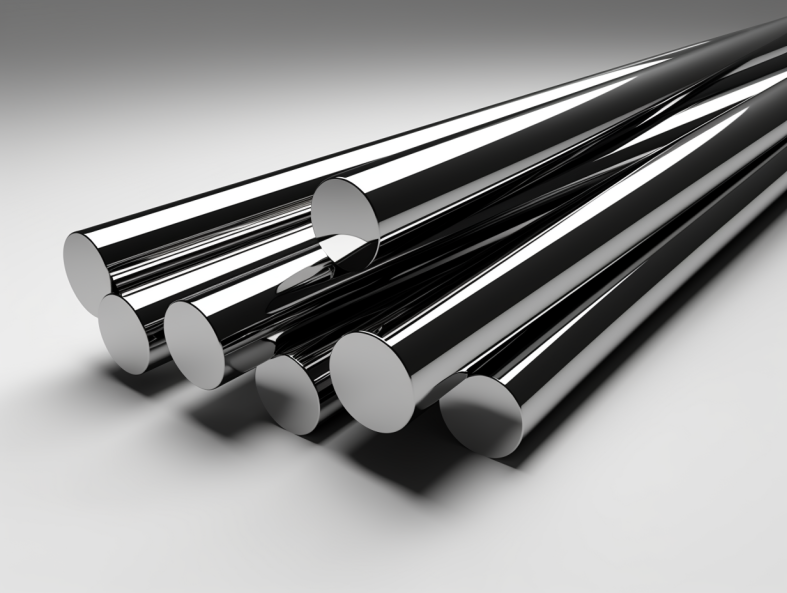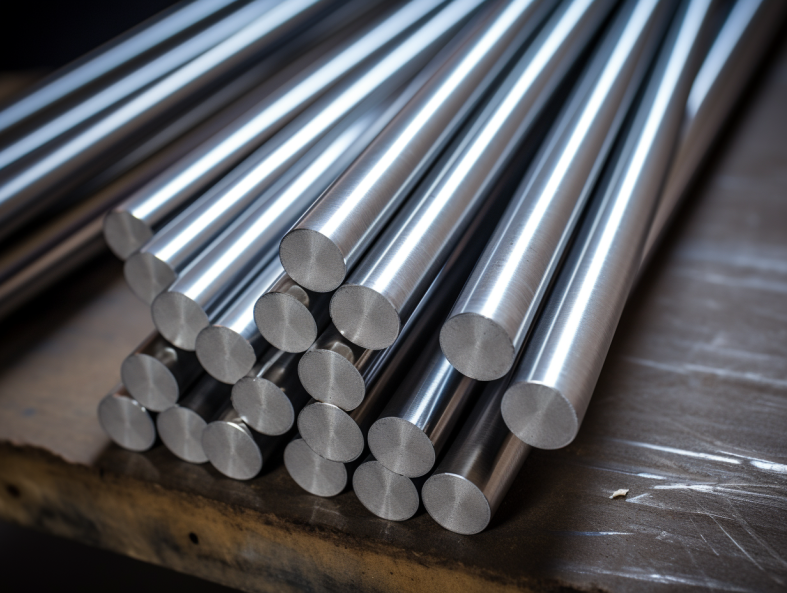Carbide strips with sharp edges are an indispensable material in cutting, machining, and other industrial applications requiring high durability blades and edges. This article provides a comprehensive overview of carbide strip properties, manufacturing, grades, sizes, applications, pros/cons, and suppliers.
What Are Carbide Strips?
Carbide strips refer to long, thin pieces of an extremely hard metal composite containing tungsten carbide. They are characterized by superior hardness, strength, and wear resistance properties making them ideal for sharp edge cutting tool and blade applications.
Carbide Strip Key Properties
| Property | Description |
|---|---|
| Hardness | Extremely high hardness 80-90 HRA, close to diamond |
| Strength | Very strong and rigid, resists cracking / chipping |
| Toughness | Impact resistant thanks to cobalt binder |
| Wear Resistance | Highly resistant to abrasive / adhesive wear |
| Corrosion Resistance | Chemically inert, resists corrosion |
| Thermal Resistance | Withstands high temperatures |
The main factors influencing carbide strip properties are:
- Grain size – Ultrafine grain powders improve hardness and strength
- Binders – Cobalt binder enables easier formability and improves toughness
- Alloying – Elements like Ti, Ta improve particular properties
- Manufacturing process – Controls microstructure and minimizes defects
Proper control of these parameters allows tailoring strips for specific cutting applications.

Carbide Strip Manufacturing
Carbide strips are manufactured via powder metallurgy processes followed by heat treatment:
- Blending of ultrafine carbide grains with cobalt binder
- Compacting into green strip billets
- Sintering strips at 1400oC to fuse particles
- Rolling or drawing into final strip size
- Straightening, edge grinding, and heat treating
- Close dimensional tolerances and precision edge grinding
Advanced methods use spray drying, dewaxing, vacuum sintering, and wire EDM cutting to boost strength and optimize properties. Strict process controls minimize variation between strips.
Carbide Strip Grades
Carbide strips are available in various standardized compositions or grades for specific applications:
Carbide Strip Grades
| Grade | Description | Key Applications |
|---|---|---|
| C1/C2 | Straight tungsten carbide (WC) | General purpose cutting, forming |
| C3/C4 | WC with grain growth inhibitors | Fine precision cutting tools |
| C5/C6 | WC-TiC-TaC/NbC alloys | High speed machining applications |
| C7/C8 | WC-TiC-TaC-Co alloys | Difficult machining of alloys, composites |
| C9/C10 | Ultrafine grain WC grades | Razor blades, surgical tools |
| C11/C12 | Ceramic reinforced strips | High temperature stability |
More complex grades continue to emerge for specialized cutting applications. The main criteria for selecting suitable grades are application requirements, workpiece properties, cutting speeds, and cost.
carbide strips with sharp edge Sizes
Carbide strips are produced in standardized widths and thicknesses as per ISO/ANSI B74.12 tolerances:
Carbide Strip Dimensions
| Width Range | Thickness Range |
|---|---|
| 1/32″ – 1”+ | 0.001” – 0.125”+ |
Typical sizes include:
- 0.008” thick x 1/2″ wide strips
- 0.02″ thick x 1” wide strips
- 1 mm thick x 10mm wide strips
Thinner strips down to 0.001” and narrow cross sections like 0.1” x 0.1” are also available. Custom made carbide strips outside standard sizes can be manufactured on request.
Advantages of Carbide Strips
Carbide strips offer distinct advantages over other cutting materials:
Carbide Strip Benefits
| Parameter | Advantage |
|---|---|
| Hardness | Up to 4X harder than tool steel enabling sharper edges |
| Wear Resistance | Significantly lower wear rates, 5-10X tool life |
| Chemical Inertness | Unreactive to work materials unlike HSS or ceramics |
| Thermal Resistance | Retains hardness at high temperatures |
| Manufacturability | Allows finer tolerances and complex geometries |
| Consistency | Predictable properties from strict process control |
| Cost Effectiveness | Despite higher prices, lower overall operating costs |
The extreme hardness enables creating sharper and more durable cutting edges leading to smooth, precision cuts, longer tool life, and lower frequency tool replacements.
Limitations of Carbide Strips
Carbide strips do have some limitations users should be aware of:
Carbide Strip Drawbacks
| Limitation | Description |
|---|---|
| Brittleness | Susceptible to cracking from impact loads |
| Chemical Reactivity | Reacts with extremely corrosive fluids |
| High Pressure | Require very high pressure forming equipment |
| Upfront Costs | More expensive than carbon steel alloys |
| Inventory | Wider range of grades and sizes to stock |
| Recyclability | Reclaiming used strips is challenging |
While the superior hardness enables better cutting performance, it also makes carbide strips crack under sudden impacts. They also struggle with highly acidic/alkaline solutions. The dependency on cobalt restricts performance at temperatures above 1000°C.
Carbide Strip Specifications
Carbide strips have precise specifications defined by international standards organizations:
Carbide Strip Standards
| Organization | Standard |
|---|---|
| ISO | ISO 513:2012 Classification and application of hard cutting materials |
| ANSI | ANSI B74.12-2009 Carbide Tool & Die Blanks |
| ASTM | F2094-18 Standard specification for WC heavy powders |
| MIL | MIL-T-13326 Tungsten carbide tool blanks |
These classify strips by properties, composition, grain size, geometries, dimensional tolerances, markings, quality checks, testing procedures, and packaging methods for easy identification and traceability.
Users must select strips as per required hardness, transverse rupture strength, magnetic particle inspection standards, surface roughness thresholds, cobalt content percentages, microstructure, and other parameters mentioned in these specifications.
Comparing Carbide Strips
Carbide strip grades differ significantly in cost, performance and applications.
Grade Comparison
| Parameter | C2 Straight Grade | C6 10% TiC Alloyed | C8 25% TiC/TaC/WC |
|---|---|---|---|
| Hardness | 86 HRA | 88 HRA | 89 HRA |
| Transverse Rupture Strength | 350 ksi | 450 ksi | 600 ksi |
| Max Temperature | 1000°C | 1100°C | 1150°C |
| Key Applications | General purpose | High speed steel, alloys | Nickel alloys, composites |
| Relative Price | 1X | 1.4X | 1.8X |
More complex compositions cost more but enable cutting tougher materials at higher speeds and temperatures. So choosing the simplest grade to meet requirements balances performance and costs.
Carbide Strip Suppliers
Specialized manufacturers worldwide produce carbide strip blanks and finished cutting tools:
Major Carbide Strip Companies
| Company | Location | Grades Available |
|---|---|---|
| Kennametal | USA | C1 – C12, Custom |
| Mitsubishi Materials | Japan | C2 – C8 |
| Ceratizit | Luxembourg | C1 – C12, Nanogrades |
| Sandvik | Sweden | C2 – C6 Ti-alloys |
| China Tungsten | China | C2 – C4 Economy Grade |
Additional sources include Kyocera, ZZM Carbide, Zhuzhou Jinggong, and TaeguTec. Most producers offer OEM services to design and manufacture application-specific carbide cutting tools using in-house produced carbide strip substrates.
Average Carbide Strip Pricing
| Grade | 0.020″ thick x 0.5″ wide strip |
|---|---|
| General purpose C2 | $8-12 per piece |
| Finish cutting C4 | $15-20 per piece |
| High speed steel C6 | $25-35 per piece |
Prices vary based on volumes, dimensions, fabrication, and economic factors. Grades with additional TiC or ceramic reinforcements cost over 50% more.

FAQs
Q: How often do carbide strips require replacement?
A: Thanks to extreme wear resistance, carbide strips provide 5-10X longer life over tool steel edges before requiring replacement. High speed steel edges may need replacement after 1-2 hours whereas carbide can operate 15-20 hours.
Q: Can used carbide strips be recycled?
A: Reclaiming used carbide strips is challenging since cobalt binder limits high temperature processing. Specialist companies use chemical processes to extract tungsten, but this is expensive due to low recovery rates and complex waste disposal requirements.
Q: How thick can carbide strips be made?
A: Carbide strip blanks up to 2” thick are produced via powder metallurgical methods followed by rolling/drawing to reduce thickness. Maximum thickness limits relate to press capacities for compacting powder precursors. Thinner strips enable making intricate tips and edges.
Q: What industries use carbide strip cutting tools?
A: In addition to machining metals, carbide tools cut glass, ceramics, wood, composites, silicon, fabrics, plastics and even foods. Key industries using such tools include automotive, aerospace, die & mold, consumer products, electronics, construction, paper, medical devices, textiles, and food processing.
Q: Why choose carbide over high speed steel?
A: Carbide strips offer extreme hardness enabling sharper, smoother cuts and 4-5X longer lifespan over high speed steel before requiring regrinding or replacement. Despite higher upfront costs, carbide strips provide the lowest overall operating cost plus higher manufacturing productivity.
Conclusion
With outstanding hardness and wear resistance, carbide strips produce sharp, durable cutting edges ideal for machining, slitting, trimming, slicing and other demanding applications. They significantly boost lifespan and performance compared to steel edges. Leading manufacturers globally offer carbide strips in standardized grades and sizes. By selecting the optimum composition, dimensions and tolerances based on work material properties and production requirements, users can implement robust, cost-effective cutting solutions.




